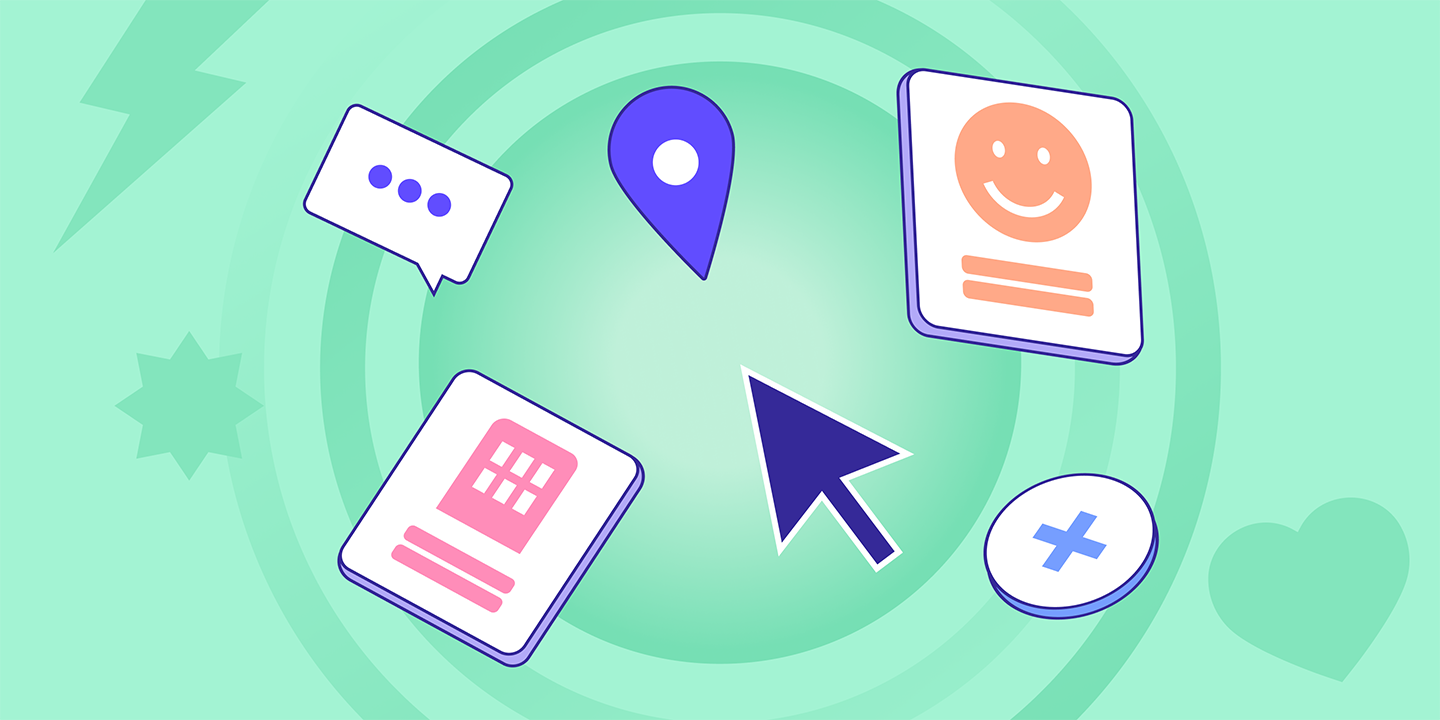Have you ever had the perfect story to tell but no one to tell it to? The right journalists can get you amazing media coverage, but how do you know who to contact? And it's not like most PR pros have hundreds of relevant journalists on speed dial.
The answer lies in media databases.
With the right database, you can find relevant journalists, create targeted media lists, and build meaningful public relations for many years to come. It's a much more effective alternative to buying media lists, as they will never be 100% tailored to your needs.
In this guide, you will read everything you need to know to choose the best media contact database for PR as well as compare top providers in 2025.
If you don't feel like comparing journalist databases, Prowly's media database software is free for 7 days with full search access, so you can see if it's a match for yourself.
TL;DR: Best media database tools by use case
- Prowly: Ideal for PR teams seeking an affordable, all-in-one platform with over 1 million contacts, AI-assisted search, and integrated press release tools.
- Meltwater: Best suited for large enterprises requiring comprehensive global media monitoring and analytics across news, social, and broadcast channels.
- Muck Rack: Perfect for PR professionals who prioritize real-time online news tracking and journalist engagement through social media integration.
- Cision: Tailored to organizations needing an extensive media database with advanced outreach automation and detailed analytics.
- Propel: Designed for teams focused on PR workflow management, offering CRM-like features and AI-driven pitch recommendations.
- Agility PR: Suitable for users looking for a versatile platform that combines media outreach with multi-channel monitoring capabilities.
- Roxhill: Best for UK-based PR professionals seeking a curated database of journalists and media outlets with a focus on quality over quantity.
- Critical Mention: Ideal for those needing real-time broadcast monitoring alongside online and social media tracking.
- Notified: A comprehensive solution for enterprises aiming to manage PR campaigns, investor relations, and event communications in one place.
What is a media database (and why do you need one)?
A media database is an organized directory of journalists, editors, bloggers, and media outlets. It usually includes:
- Journalists' contact information
- Topics they cover
- Where they work
- How they prefer to be contacted
PR professionals use media databases to find the right people for their stories. Instead of guessing or researching from scratch, you get instant access to relevant contacts.
This helps you:
- Build media lists faster and find new journalists easily
- Personalize your outreach (e.g. based on a journalist's recent articles)
- Manage ongoing relationships
In short, a media database saves time and helps you land better media coverage.
List of journalist databases for PR
Unfortunately, many media database providers do not publicly share much information about their media databases (such as pricing), requiring you to contact them directly to find out more.
When choosing a media database, the most important thing is to check how many journalists in your niche are available and whether the data is up-to-date. The best way to find out is to sign up for a free trial or demo call with the database provider and check the quality of the contacts directly.
| Provider | Pricing | Contract Length | # of Contacts | Free Trial | Key features | User ratings |
|---|---|---|---|---|---|---|
| Prowly | From $258/mo | Monthly or yearly | >1,000,000 | Yes (7 days) | - Media database with over 1 million contacts- AI-powered search- Customizable online newsrooms- Integrated press release creator and pitching tools- Media and social media monitoring | 4.5/5 (G2) |
| Meltwater | From $8,000/yr* | Yearly only | >380,000 | No | - Global media database- Comprehensive media monitoring across news, social, and broadcast- Advanced analytics and reporting tools- Integration with social media management | 4.0/5 (G2) |
| Muck Rack | From $10,000/yr* | Yearly only | >300,000 | No | - AI-powered media database- Real-time media monitoring and alerts- PR campaign management and reporting tools- Collaboration tools for PR teams | 4.6/5 (G2) |
| Cision | From $10,000/yr* | Yearly only | >1,400,000 | No | - Extensive media database- Advanced outreach automation- Detailed analytics- Press release distribution and media monitoring tools | 4.1/5 (TrustRadius) |
| Propel | From $2,400/yr | Yearly only | >1,000,000 | No | - AI-powered journalist recommendations- PR CRM for workflow management- Integration with Gmail and Outlook- Media database with over 1 million contacts | 4.0/5 (G2) |
| Agility PR | Undisclosed | Yearly only | >1,000,000 | No | - Media database with over 1 million contacts- Media outreach, monitoring, and analytics tools- Real-time alerts and sentiment analysis- Customizable reports and competitor analysis | 3.3/5 (G2) |
| Roxhill | Undisclosed | Yearly only | >190,000 | Yes | - Database of over 190,000 journalist profiles- Real-time articles and journalists' social feeds- Advanced search technology and ready-made lists- Integrated media intelligence and monitoring | 3.5/5 (G2) |
| Critical Mention | Undisclosed | Yearly only | Undisclosed | No | - Real-time broadcast monitoring (TV, radio, podcasts)- Online news and social media tracking- Customizable reports with graphs and charts- Media contact database | 4.3/5 (G2) |
| Notified | Undisclosed | Yearly only | Undisclosed | No | - Media monitoring across various channels- Press release distribution and analytics- Investor relations and event communications management- Integrated PR campaign tools | 4.0/5 (G2) |
Prowly

Prowly is a user-friendly platform ideal for small to medium-sized PR teams. It provides access to over 1 million media contacts, AI-assisted search, and integrated press release tools.
With transparent pricing starting at $258/month and a 7-day free trial, Prowly is an excellent option for anyone who needs an all-in-one PR solution.
Key features:
- Media database with over 1 million contacts.
- AI-powered search for relevant media contacts.
- Customizable online newsrooms with SEO capabilities.
- Integrated press release creator and pitching tools.
- Media and social media monitoring.
Pros:
- User-friendly interface.
- Affordable pricing with transparent plans.
- Comprehensive feature set for PR needs.
Cons:
- Limited functionality in basic plans.
Pricing:
| Provider | Pricing | Contract length |
| Prowly | From $258/mo | Monthly or yearly |
Prowly‘s media database costs $258/mo for the most basic plan, which includes the ability to use or export 1,000 media contacts. The price can be upgraded to 3,000 media contacts, which brings the total to $393. More contacts are additionally available upon request.
Meltwater
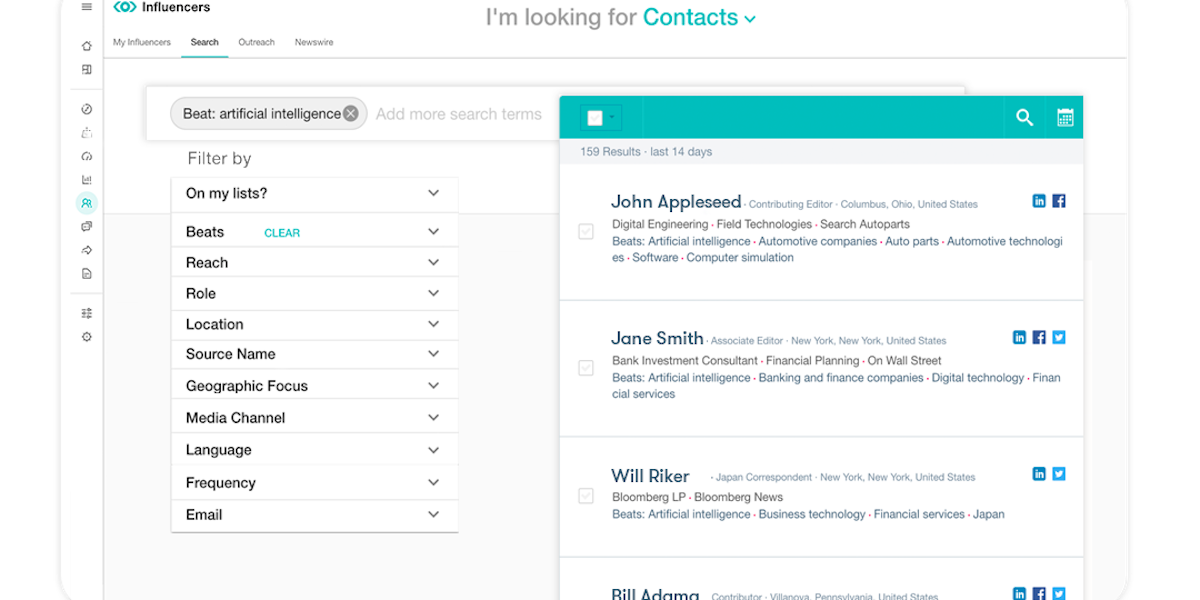
Meltwater is designed for large enterprises requiring comprehensive global media monitoring and analytics. It offers access to over 380,000 media contacts and integrates news, social, and broadcast monitoring.
Key features:
- Global media database with extensive contact information.
- Comprehensive media monitoring across news, social, and broadcast channels.
- Advanced analytics and reporting tools.
- Integration with social media management.
Pros:
- Powerful media monitoring capabilities.
- User-friendly interface with customizable reports.
- Strong customer support during setup.
Cons:
- High price, starting from $6,000/year.
- Some users find the platform's development immature.
- Additional features may come at extra costs.
Pricing:
| Provider | Pricing | Contract length |
| Meltwater | From $6,000/yr* | Yearly only |
Meltwater's media database pricing is also not available on their website. From our data, we estimate it to cost $6,000 per year if purchased for a single country. With more countries, the price can increase to $8,000 annually.
→ For more on Meltwater pricing, click here.
Muck Rack

PR professionals love Muck Rack because it prioritizes real-time online news tracking and journalist engagement. It has a database of over 300,000 contacts and emphasizes accurate, up-to-date information.
Key features:
- AI-powered media database indexing hundreds of millions of data points.
- Real-time media monitoring and alerts.
- PR campaign management and reporting tools.
- Collaboration tools for PR teams.
Pros:
- Comprehensive and up-to-date journalist profiles.
- User-friendly platform with strong customer support.
- Effective media monitoring capabilities.
Cons:
- High price, approximately $10,000/year.
- Some reports of outdated contacts.
- Limited AI insights compared to competitors.
Pricing:
| Provider | Pricing | Contract length |
| Muck Rack | From $10,000/yr* | Yearly only |
Muck Rack's pricing is also hidden, but we estimate their database to cost around $10,000 per year or more, with no available monthly option.
Cision
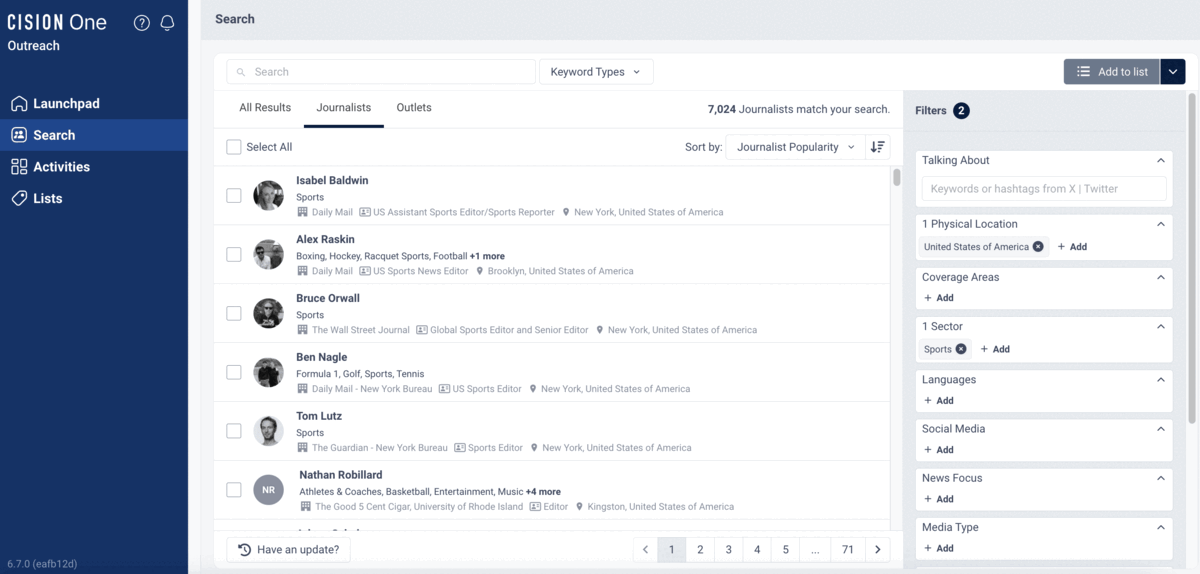
Cision caters to organizations that need an extensive media database with advanced outreach automation and detailed analytics. With over 1.4 million contacts, it has a wide range of tools for press release distribution and media monitoring.
Key features:
- Extensive media database with over 1.4 million contacts.
- Advanced outreach automation and detailed analytics.
- Press release and email distribution, media monitoring tools.
- Social media listening and content management.
Pros:
- Comprehensive PR software with a wide range of tools.
- In-depth media databases and monitoring services.
- Flexible and user-friendly interface.
Cons:
- High price, starting at approximately $10,000/year.
- Requires annual contracts.
- Some users report high bounce-back rates on emails.
Pricing:
| Provider | Pricing | Contract length |
| Cision | From $10,000/yr* | Yearly only |
Based on our insights, Cision's media database pricing is around $600 monthly. Because Cision only offers annual plans, the database will cost a hefty $10,000 each year or more.
Cision's PR database is one of the most expensive available on the market, partly because it requires buying the other tools that Cision offers to get full use of it. Pricing is not publicly available on their website and requires potential users to contact their sales department.
Propel

Propel is designed for teams focused on PR workflow management. It offers CRM-like features and AI-driven pitch recommendations. It includes a global media database with over 1 million journalists and integrates with Gmail and Outlook.
Key features:
- AI-powered journalist recommendations.
- Media database with over 1 million contacts.
- PR CRM for workflow management.
- Integration with Gmail and Outlook.
Pros:
- Affordable pricing starting at $2,400/year.
- Strong analytics and reporting tools.
- User-friendly interface with responsive customer support software.
Cons:
- Limited enterprise features.
- Some users find the UI clumsy.
- Running reports and obtaining metrics can be challenging.
Pricing:
| Provider | Pricing | Contract length |
| Propel | From $2,400/yr | Yearly only |
Propel offers its media database with its PRM4TM subscription, which includes four users. The tool also includes media monitoring and other useful PR features.
Agility PR
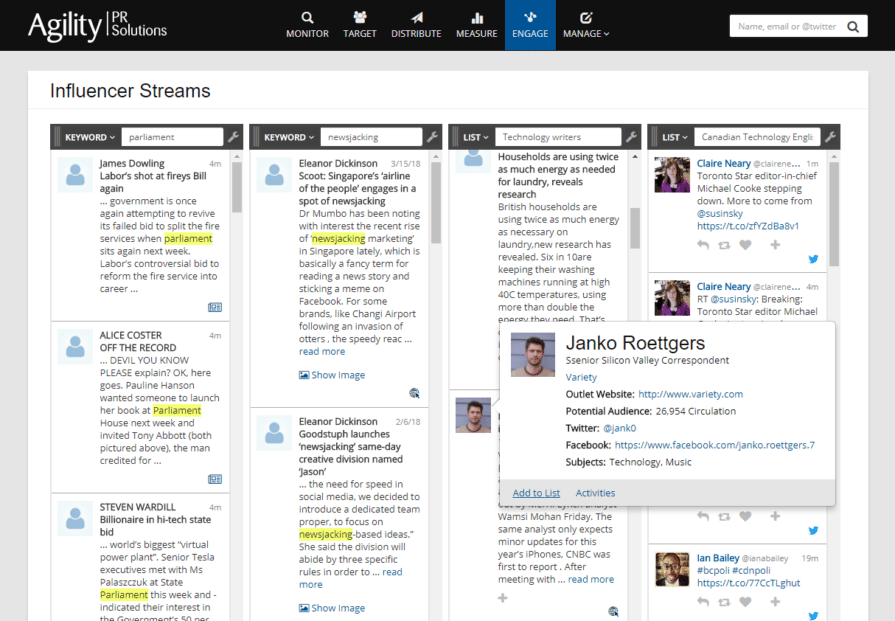
Agility PR Solutions is a versatile platform that combines media outreach with multi-channel monitoring capabilities. It offers a media database with over 1 million contacts and tools for press release distribution and PR measurement. Pricing details are undisclosed.
Key features:
- Media database with over 1 million contacts.
- Media outreach, monitoring, and analytics tools.
- Real-time alerts and sentiment analysis.
- Customizable reports and competitor analysis.
Pros:
- Suitable for agencies with multiple clients.
- Excellent customer support.
- Ease of use and intuitive interface.
Cons:
- Pricing can be high, with annual plans only.
- Media database personalization features could be improved.
- Some users report data inaccuracies.
Roxhill
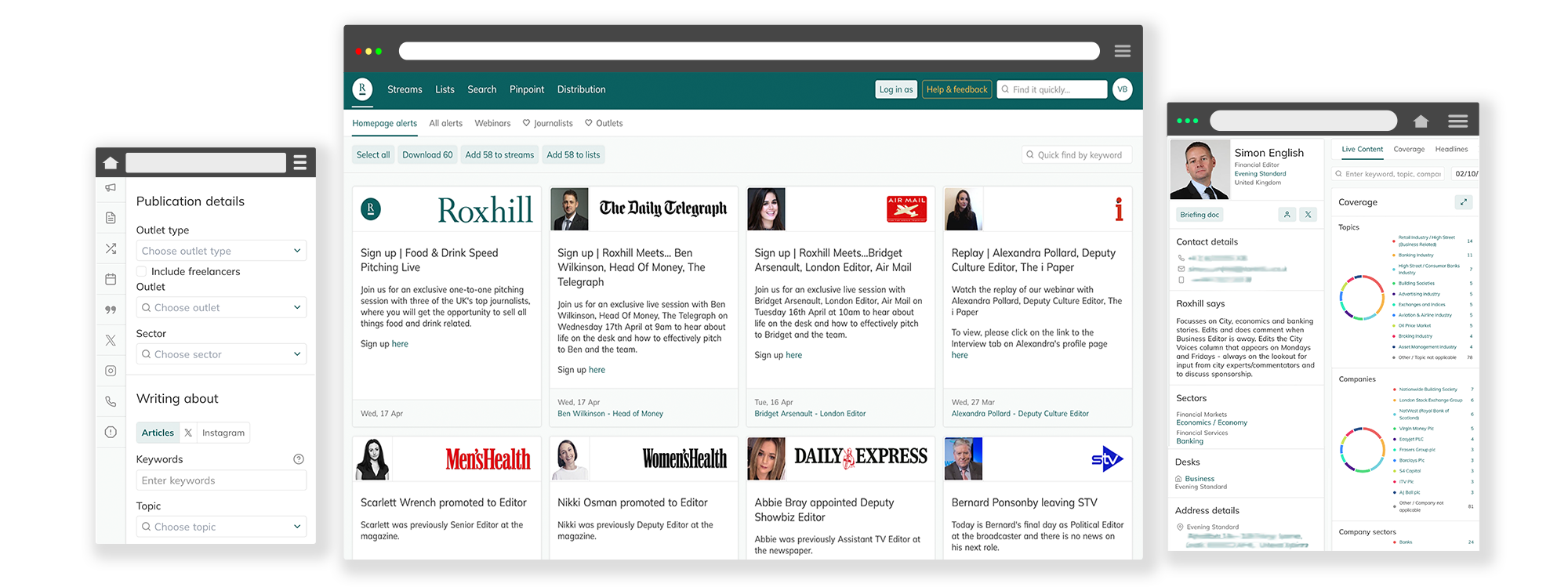
Roxhill is best for UK-based PR professionals seeking a curated database of journalists and media outlets with a focus on quality over quantity. It provides personalized media insights and media monitoring tools. Pricing is undisclosed.
Key features:
- Database of over 190,000 journalist profiles.
- Real-time articles and journalists' social feeds.
- Advanced search technology and ready-made lists.
- Integrated media intelligence and monitoring.
Pros:
- Sophisticated and up-to-date media database.
- Intuitive to use with great list functions.
- Excellent customer service.
Cons:
- Some users report that details are often not up to date.
- Occasional slowness, possibly due to internet speeds.
Critical Mention
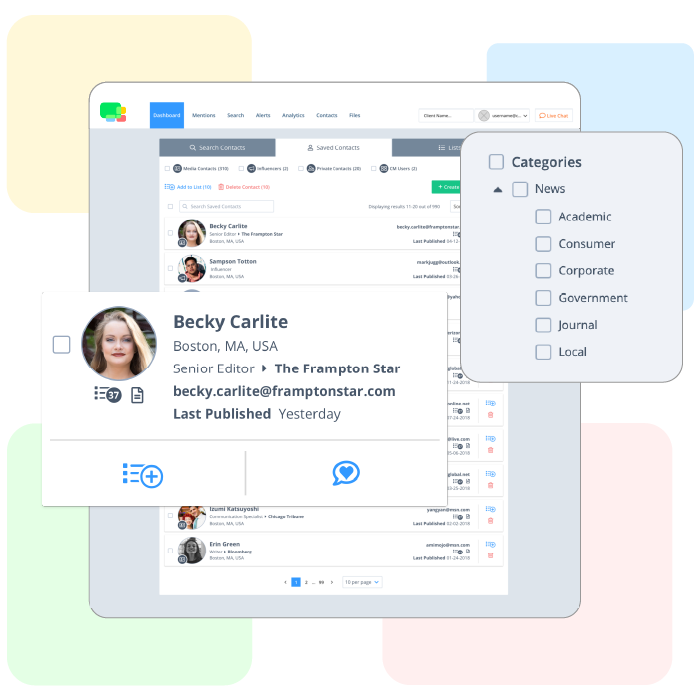
Critical Mention is ideal for those needing real-time broadcast monitoring alongside online and social media tracking. It offers near real-time tracking of brand, competitor, and keyword mentions across various media, including TV, radio, online news, social media, and podcasts. Pricing is estimated between $2,500 and $10,000 per year.
Key features:
- Real-time broadcast monitoring (TV, radio, podcasts).
- Online news and social media tracking.
- Customizable reports with graphs and charts.
- Media contact database.
Pros:
- Comprehensive media monitoring capabilities.
- User-friendly interface.
- Responsive customer support.
Cons:
- The media database may not be as robust as its competitors.
- Some users report outdated contact information.
Notified

Notified provides a comprehensive solution for enterprises aiming to manage PR campaigns, investor relations, and event communications in one place. It includes tools for media monitoring, press release distribution, and analytics. Pricing details are undisclosed.
Key features:
- Media monitoring across various channels.
- Press release distribution and analytics.
- Investor relations and event communications management.
- Integrated PR campaign tools.
Pros:
- Comprehensive solution for enterprises.
- Combines PR, IR, and event communications.
- Robust analytics and reporting features.
Cons:
- Pricing details are undisclosed.
- It may be more suitable for larger organizations.
What to consider when choosing a media database
Media contact database size
Whether you're looking for a national or international media database, it's worth noting how many media contacts are available. While more is not always better, it increases your chances of finding the right journalists who will be most interested in your news story.
The largest media databases will have at least 1 million media contacts available, although this number can be lower if the database covers only a certain region.
Prowly’s Media Database has more than 1.1 million contacts, making it one of the biggest media contact databases on the market.
However, access to a large email database doesn't guarantee coverage. The key is identifying the right outlets and journalists.
PR experts note a shift towards research and data-driven decisions due to changes in the media landscape. With fewer traditional outlets and more niche platforms, effective pitching requires thorough research. Only about a quarter of pitches are relevant to a given journalist's audience.
Prowly enhances contact searches with unique features:
👉🏼 Partnership with Semrush provides exclusive data on audience and traffic.
👉🏼 AI keyword suggestions

International media database size
If you're looking for international media contacts, don't just look at the total number of media contacts available—find out how many are in the regions, countries or cities that you're interested in.
Some databases may have a large international media contact list, but the quality and quantity of the contacts can vary from region to region. If possible, ask about the number of contacts in the location you're interested in or find out if there's a free trial to have a look for yourself.
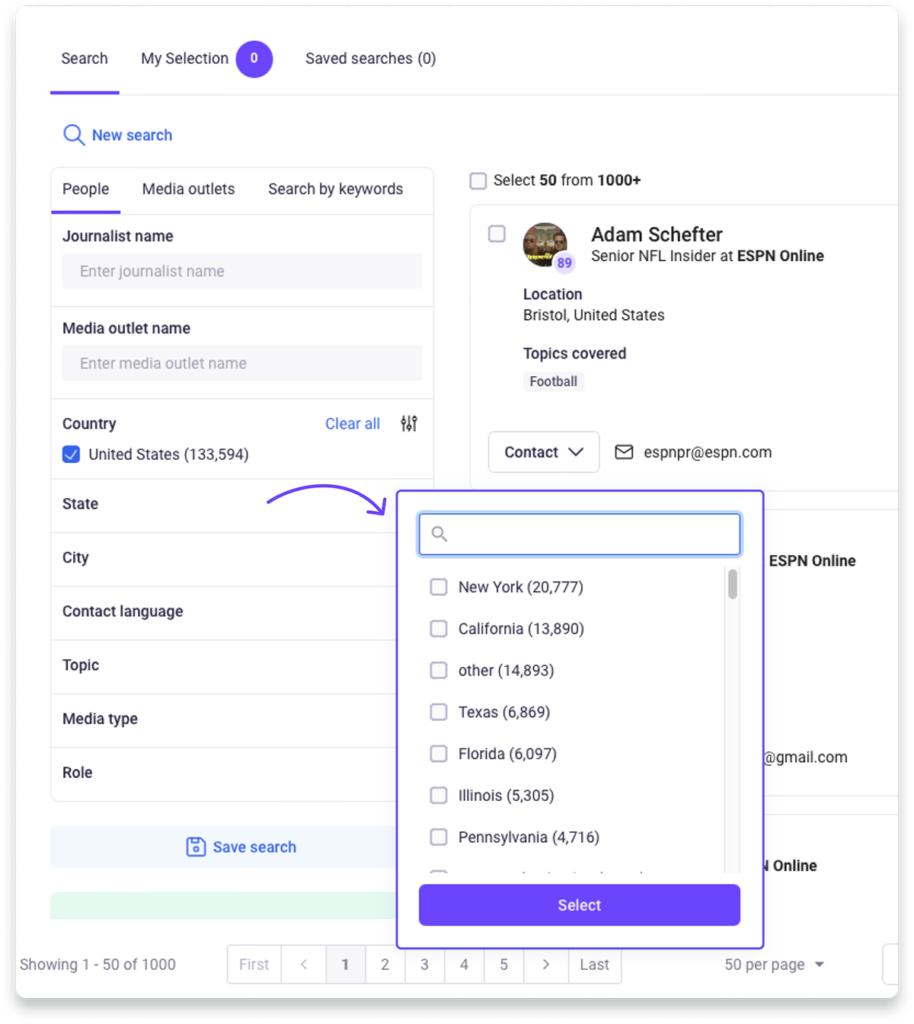
Available contact information
At the very least, a media contacts database should contain basic information about the media contact that lets you identify if they would be interested in your story and how you can contact them. These include:
- name and surname
- position
- email address
- phone number
- beat/topics covered
- media outlet
- social media accounts
More advanced databases will contain additional information such as:
- languages used in the case of multi-lingual journalists
- influence score or similar metric
- what articles they've recently written
- suggestions for new contacts generated by the system based on similar criteria, which you have followed so far
Accuracy and update frequency
Even if a media database checks all the boxes above, it can leave you frustrated if the media contact information is outdated or inaccurate.
In order to figure this out, it's worth asking these two crucial questions:
- How frequently the database is updated?
- What is/are the sources of the available media contacts?
Media contact information can be sourced from one channel or from various locations on the web. If possible, look for a database that gathers data from multiple sources.
For example, Muck Rack uses only Twitter to generate its media contacts. The downside – if the journalist is not on Twitter or doesn't update their profile, they may not be in the database or their information may be incorrect. This is a thing to keep in mind since more and more journalists are switching to Twitter alternatives.
Available search filters
As a journalist database can contain a lot of contacts, check what are the options for narrowing down your search in order to find the most relevant journalists. For example you can:
- search media outlets where your target audience is and then check contributing journalists
- search articles with keywords (expanded with AI keyword suggestions) and get contacts to the authors

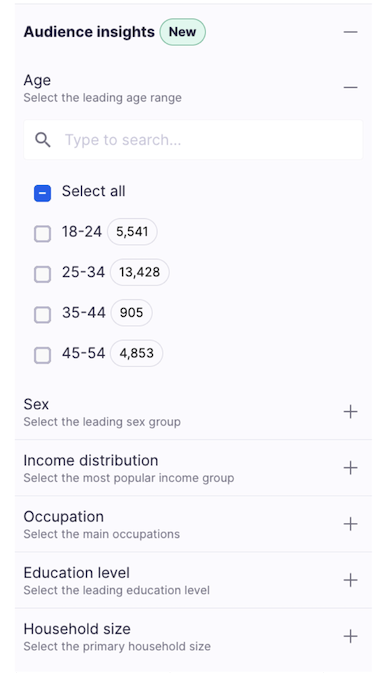

The most common filters are:
- journalist's name
- location
- beat or topics of interest
- media outlet
- position/role
- keywords based on written articles
Make it easier to find journalists and build relationships with highly targeted contacts — learn everything about using Audience Analytics and AI Keyword research from this article.
Media database sample or free trial
Absolutely make sure that the media database tool you're interested in offers a sample of the available contacts—or better yet, a free trial. Blindly buying media lists or contacts can lead to wasted time and money.
Most providers will provide a sample on request or display available contacts during a product demo. This is better than nothing, but it doesn't always give you the full picture and can leave you wondering if you'll find the right contacts.
If possible, find out if the media database provider offers a free trial. This lets you explore the application and see if it meets your needs.
Prowly offers a free 7-day trial with full search access. Contact details are hidden, but it allows you to see which contacts are available to be confident in your decision before purchasing.
Pricing & contract length
Media databases usually aren't cheap and some are only available with annual subscriptions. There is no free media database, but there are a few tools with free trials and free pitch credits.
Unless your PR budget is unlimited, take into account the following factors when doing your research:
- Compare media database pricing for different providers, keeping in mind that more $$$ does not always mean creating your own media list and making it exceptional
- Flexibility—does the vendor offer various plans depending on your needs and the size of your team (especially if you're a freelancer or small business), so you can adjust your PR strategy later
- Check what the minimum length is for a contract; some companies require you to pay upfront for a whole year
Unfortunately, most of the pricing plans for top media databases are not publicly available on their websites, but their subscription costs are estimated to start at around $400 per month or $5000 per year.
We were able to provide estimated pricing for the most popular databases based on third-party data and publicly available reviews.
| Provider | Pricing | Contract length |
| Prowly | From $258/mo | Monthly or yearly |
| Meltwater | From $6,000/yr* | Yearly only |
| Muck Rack | From $10,000/yr* | Yearly only |
| Cision | From $5,000/yr* | Yearly only |
| Propel | From $2,400/yr | Yearly only |
| Agility PR | Undisclosed | Yearly only |
| Roxhill | Undisclosed | Yearly only |
| Critical Mention | Undisclosed | Yearly only |
| Notified | Undisclosed | Yearly only |
Other media database pricing
Unfortunately, it's unknown how much the other databases cost. They do not disclose their pricing and require potential users to contact their sales teams. But pricing plans will depend on the number of users and features required.
💡 If you need even more details, check out this article featuring examples of Prowly alternatives. You can also simply ask us anything you'd like to know!
Questions to ask the media database provider
Even if you think that a chosen media database matches all your expectations, it’s better to ask the following questions before investing your time and money in it:
How is the media contact base relevant to the industry the customer works in?
When reviewing the size of a database, it's important to determine the number of relevant contacts. For example, the quantity of contacts that specialize in your industry topics. The sales team should provide you with custom research and showcase a possible media list based on your specific query.
💡 Learn how to create effective media monitoring queries from this article based on real-life examples.
What’s the number of unique contacts in the media database?
The provider should be able to showcase the diversity of media types, such as journalists and bloggers, as well as their location and other filters that you can use on the platform.
Is it possible for customers to add necessary media contacts to the media database, such as specific journalists, influencers or outlets?
It should be possible but may require a request to the customer support team.
What type of customer support is provided?
Ask what the customer support process looks like - will the customer support team help you with ongoing questions on the platform or is there any training program offered? Ensure that the company is willing to guide you through the setup and provide prompt solutions to any questions that may arise.
Is it possible to export your contact lists?
It should be possible to download your list in CSV, XLS, or XLSX formats.
Is it possible to create a personalized pitch right on the platform?
You should be able to tailor your email pitches to different recipients based on factors such as your relationship with them, their location, or their area of expertise simply by incorporating these details into your messages.
Does the platform have enough functionality to manage media contact lists?
You should be able to have different access levels for your team to work with, to add your own notes and tag contacts, to follow chosen journalists and receive notifications when they publish new articles, etc.
List of media databases for PR
Below you can find a list of the major media databases with US & global media contacts:
- Prowly
- Meltwater
- Muck Rack
- Cision
- Propel
- Agility PR
- Roxhill
- Critical Mention
- Notified
Looking for UK or Australian media contacts? Check out the comparison of UK media databases and Australian media databases respectively.
Buying a media list or a media database – what's the difference?
You might wonder whether it's better to buy a media list or a media database or what the difference is between the two.
| Buying a media list | Subscribing to a media database | |
|---|---|---|
| Definition | A pre-made list of media contacts, often segmented by industry or location. | A dynamic platform providing access to a wide range of media contacts and outlets. |
| Customization | Limited; lists are generic and may not align with specific needs. | High; users can tailor searches using various filters to find relevant contacts. |
| Data accuracy | Potentially outdated or inaccurate; may require manual verification. | Regularly updated to ensure current and accurate contact information. |
| Effort required | Minimal initial effort; ready to use upon purchase. | Requires time to search and build targeted lists, but offers more precision. |
| Cost | One-time purchase; may seem cost-effective initially. | Subscription-based; ongoing cost but offers more features and up-to-date data. |
| Risk of redundancy | High; the same list may be sold to multiple buyers, leading to over-pitched contacts. | Lower; users create unique lists, reducing the chance of contact fatigue. |
| Integrations | Generally standalone; limited integration with PR tools. | Often integrates with PR tools like press release creators and media monitoring. |
| Trial availability | Rarely offered; purchases are often final. | Many providers offer free trials to explore features before committing. |
A media list is what it sounds like—a concrete list with media contacts, often narrowed down to a specific industry and/or location.
On the other hand, a media database gives you access to every single media contact and media outlet available (as long as they're in the database).
The upside to buying a media list is that it's already made and waiting to be used. You don't have to put in a lot of effort.
The downside, however, is that it can be outdated, inaccurate, or, most commonly, poorly customized for your specific needs.
| Advantages | Disadvantages | |
|---|---|---|
| Buying a media list | Immediate access to a set of contacts.Simplifies initial outreach efforts. | Risk of outdated or irrelevant contacts.Limited customization and targeting.Potential for shared use, leading to over-pitched journalists. |
| Subscribing to a media database | Access to a vast and regularly updated pool of contacts.Advanced search filters for precise targeting.Integration with other PR tools enhances workflow efficiency.Opportunities for building long-term media relationships. | Requires a learning curve to use effectively.Ongoing subscription costs. |
A media database helps you to find the most relevant contacts for your story and make your own targeted media list. This greatly increases your chances of getting your story noticed and picked up by the media because you're reaching out to people who are waiting for a story like yours.
My go-to PR tools are online media databases and journalist source request platforms. It can be difficult to keep track of current journalists or media professionals' contact information, so online media databases like Prowly or Cision help connect with the right person for the right article on your clients' behalf. Using these helpful PR tools is key to advancing in the industry and making the most of every opportunity. - Brandi Sims, Founder & CEO @ Brandinc PR
💡 Tip: To get to know the top magazines to pitch in the US market, explore this article.
Conclusion
Choosing a media database can be frustrating, mainly because there are so many and the majority require you to talk with sales to get a sample of the available contacts.
Start by figuring out what exactly you're trying to achieve with a media database and what kind of contacts you're trying to find. Once you have that written down, look for providers that offer a free sample or trial to get an idea of the quality and accuracy of the database.
Frequently asked questions
1. What should I look for when choosing a media database?
When selecting a media database, consider the following factors:
- Relevance: Ensure the database includes contacts pertinent to your industry and target audience.
- Accuracy: The database should be regularly updated to maintain current contact information.
- Functionality: Look for features like advanced search filters, integration with PR tools, and analytics capabilities.
- Support: Reliable customer service and training resources can enhance your experience.
2. How does a media database differ from a media list?
A comprehensive, searchable media database contains many media contacts, including journalists, editors, and influencers. It allows users to build customized media lists tailored to specific campaigns or audiences. In contrast, a media list is a static compilation of contacts, often lacking the dynamic features and regular updates provided by a media database.
3. Are media databases suitable for small businesses or freelancers?
Yes, many media databases accommodate various needs and budgets. Some platforms provide flexible subscription models or pay-as-you-go options, making them accessible for smaller operations. Additionally, certain databases focus on specific regions or industries, allowing users to target their outreach effectively without unnecessary expenses.
